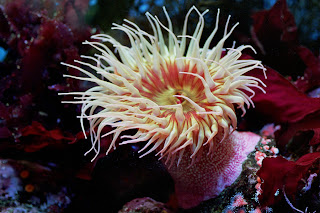Sea anemones may look delicate and flowerlike, yet these simple animals are dangerous predators lying in wait for any small prey that may blunder into their outstretched tentacles.
Sea anemones were prominent with right on time naturalists who found them effortless to keep in their marine aquariums. Worldwide, there are a considerable number of grandly shaded and designed species. Sea anemones are closely related to corals. The sea anemone’s saclike body is a hollow column with the mouth at the top. It is surrounded by one or more rings of tentacles.
There are stinging cells all over the body, but most of them are on the tentacles. When a modest creature touches the tentacles, the stinging cells shoot out a spiky string into the animal. Then the prey is passed to the slitlike mouth of the anemone to be swallowed. The mouth opens into a digestive chamber inside the column. A Useful Shape
Sea anemones have round bodies with no front or back. Nor do they have a head. Since they hardly ever move, do not chase their prey, and do not need to seek out mates, this is not important. They are sit-and-wait predators. Their shape is ideal for this, since they can catch prey equally well from any direction. They can also defend themselves from attacks by predators and other enemies in the same way.









0 comments:
Post a Comment